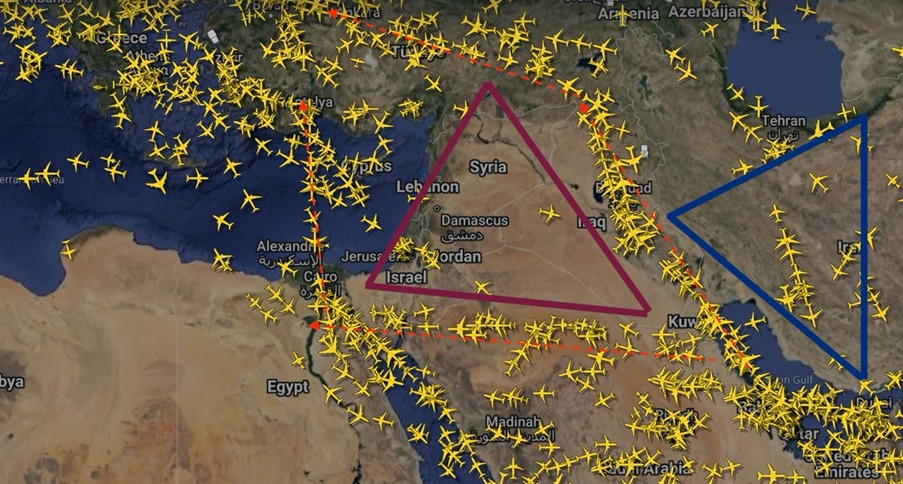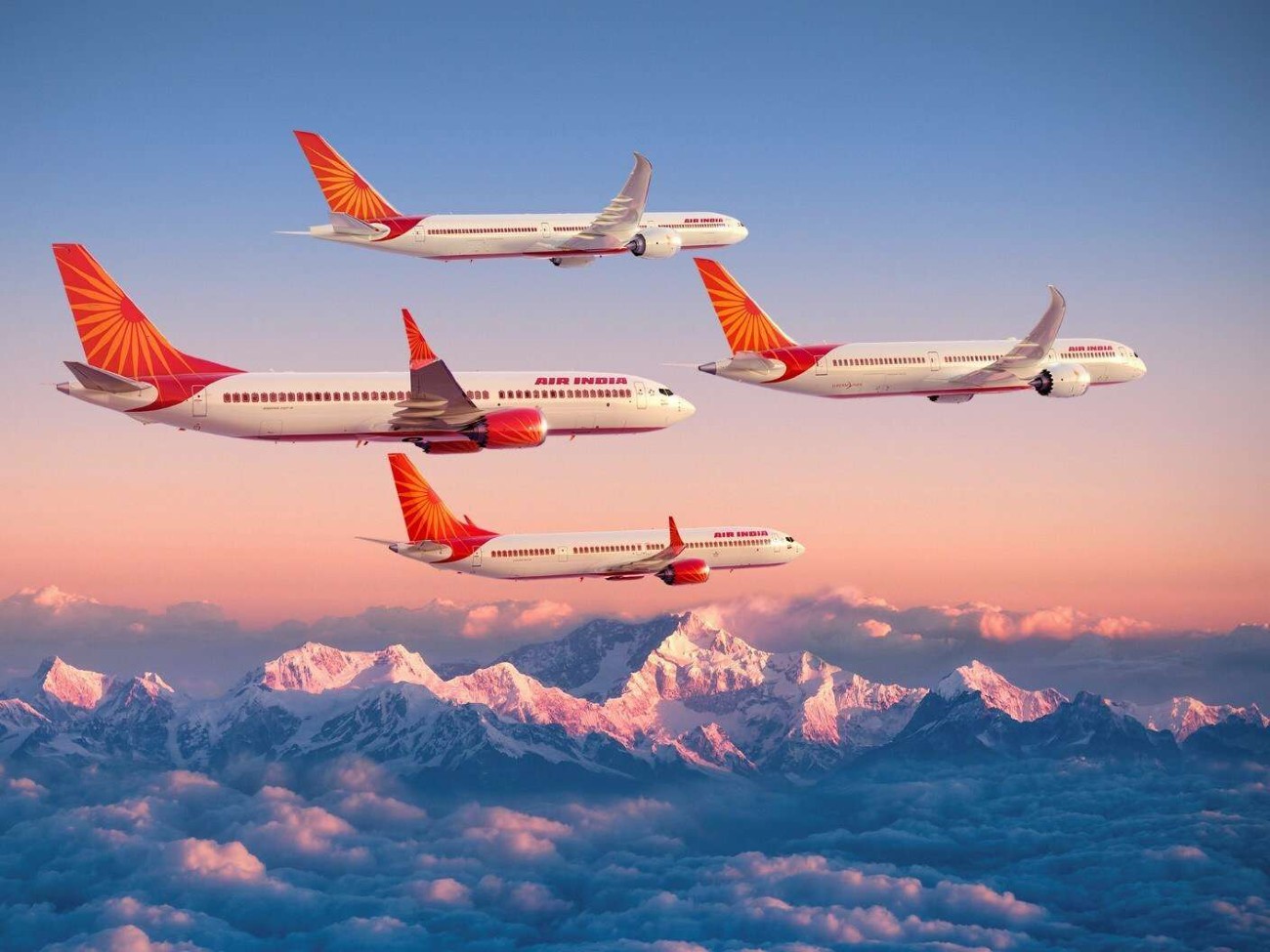By: Group Captain (Dr) MJ Augustine Vinod (Retd)
The escalating conflict between Iran and Israel has far-reaching consequences that resonate across global dimensions, with an acute impact on air travel.
Asia, with its central geographical positioning and burgeoning air travel market, is significantly affected, especially nations like India that have heavy traffic routes passing near or over conflict zones.
Safety remains the paramount concern, prompting airlines to reroute flights, which leads to a domino effect, including increased fares, extended travel times, and logistical complexities in scheduling.
Safety First: The Imperative For Rerouting Flights
Learning From Past Tragedies
The primary goal of these reroutings is to safeguard passenger safety by mitigating the risk of aircraft being caught in hostile military activities or misidentifications that could lead to tragic accidents.
This approach is heavily influenced by previous disasters, notably the downing of Malaysia Airlines Flight MH17 over Ukraine, which starkly highlighted the dangers posed by airborne conflicts.
Airlines and international regulatory bodies have since become more vigilant, strictly monitoring and avoiding airspace near active conflicts.
Consequently, these changes, although causing logistical and operational challenges, are critical in ensuring that the safety of passengers and crew remains the foremost priority in airline operations management.
Through meticulous planning and the adoption of alternative flight paths that circumvent troubled regions, airlines strive to maintain the highest safety standards amidst complex global security landscapes.
Impact On European & American Carriers
The Iran-Israel conflict and the subsequent need to reroute flights away from areas of potential conflict have notably impacted European and American air carriers. These carriers often operate numerous transcontinental routes that traverse the Middle East en route to Asia and Oceania, making them particularly vulnerable to disruptions in this airspace.
The diversion of these flight paths to avoid the conflict zone typically results in longer flight durations and increased fuel consumption, which in turn escalates operational costs and can lead to higher ticket prices for consumers.
Additionally, the necessity to bypass this traditionally used airspace compels carriers to navigate alternative routes that may involve overflying countries with higher air traffic control fees, further straining their operational budgets.
The increased flight times also raise significant logistical challenges, potentially requiring additional crew members to comply with international aviation safety regulations regarding maximum allowable flight durations for pilots and cabin staff.
This complex web of changes necessitates a robust adjustment in scheduling and fleet management, aiming to mitigate the financial and operational impacts while continuing to ensure passenger safety and convenience.
Impact on Asian & Indian Air Carriers
Operational & Financial Challenges
For Indian air carriers, the rerouting necessitated by the Iran-Israel conflict presents several challenges:
- Increased Operational Costs: Longer routes require more fuel and incur higher operational costs. These costs are often passed on to the customers, leading to increased ticket prices.
- Extended Flight Durations: Flights from India to Europe, traditionally passing over Middle Eastern airspace, now face significant detours. For instance, a direct flight from Delhi to London might now have to route southward over the Arabian Sea and then west over the Red Sea, considerably lengthening the flight time.
- Potential for New Hubs: Given the extended durations, Indian carriers might consider establishing new hubs or stopovers in strategically safe locations, possibly in Eastern Europe or additional cities in Southeast Asia, to manage crew fatigue and ensure adherence to international aviation safety regulations.
- Affect on Pricing and Demand: The rise in operational costs and the inconvenience of longer flight times could temper demand, especially in price-sensitive markets. Airlines may need to balance higher fares with the risk of reduced passenger numbers.
Detailed Examination Of Flight Path Changes & Their Consequences
Strategic Avoidance of High-Risk Airspaces
In response to the ongoing conflict between Iran and Israel, airlines globally are taking proactive measures to enhance flight safety by avoiding airspace that could potentially expose passengers and crew to conflict-related dangers.
This precaution specifically includes not flying over high-risk areas such as Israel, Syria, Jordan, western Iraq, and Iran. These regions, being at the epicenter or in close proximity to the conflict, pose a significant risk of aerial military activity and other threats, such as missile launches or drones, which could jeopardize air travel safety.
By rerouting flights to circumvent these countries, airlines aim to eliminate the risk of accidents similar to previous catastrophes, where commercial aircraft were downed in conflict zones.
This cautious approach often means selecting flight paths that may be longer and could involve additional stopovers or higher operational costs, but these are considered necessary trade-offs to maintain the highest safety standards and protect the lives of those aboard their aircraft.

Longer Travel Times
Extended travel times may necessitate stopovers in unexpected locations, potentially turning cities like Athens or Cairo into transit points for flights heading to Europe or America.
This change could open new routes but also complicate travel plans and increase costs for travelers who now need to factor additional stopovers into their travel budgets.
Schedule Disruptions & Increased Aircraft Utilization
The longer air time per flight also means aircraft spend more time airborne and less time available for maintenance, which can strain operational capacities. This increased utilization might lead to more frequent maintenance needs, reducing the overall availability of aircraft and potentially leading to more cancellations or delays.
Strategic Responses By Indian Airlines
Indian carriers are actively adapting to these challenges. For instance:
- Enhanced Customer Communication: Airlines are improving communication channels to keep passengers informed about changes in flight schedules and potential delays.
- Flexible Rebooking Policies: Airlines might offer more flexible rebooking options or waivers for change fees to accommodate disruptions and mitigate passenger inconvenience.
- Investment in Fuel Efficiency: To manage increased fuel costs, a strategic shift might be made toward investing in more fuel-efficient aircraft or exploring alternative fuel options.

Conclusion
The aviation landscape, particularly in Asia and for Indian carriers, is undergoing significant transformation due to the external pressures of regional conflicts like the Iran-Israel situation.
While the primary goal of these changes is enhancing safety, the ripple effects extend into economic and operational realms. Airlines must navigate these challenges with innovative strategies to manage costs, maintain service quality, and ensure passenger safety and satisfaction.
As the situation evolves, the aviation sector’s resilience and adaptability will be crucial in managing the impact of geopolitical tensions on air travel.
- Group Capt MJ Augustine Vinod VSM (retd) tweets at @mjavinod; Vineet Maliakal is COO, AutoMicroUAS. The views expressed in the above piece are personal and solely those of the author. They do not necessarily reflect the EurAsian Times’ views.




